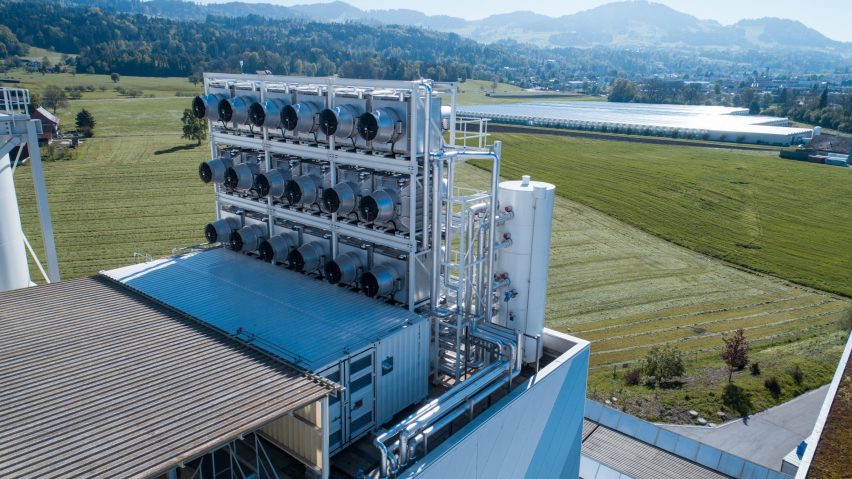
The world's first commercial carbon-capture plant opens in Switzerland
Climeworks has opened a groundbreaking plant in Switzerland where carbon dioxide is sucked from the air before being resold.

The direct air capture (DAC) plant is capable of removing 900 tonnes of carbon dioxide (CO2) from ambient air annually.
This is then supplied as a raw material to customers in different markets, including to a nearby vegetable farm, where it is used as fertiliser. The CO2 can also be used to make carbonated drinks and carbon-neutral fuels.
By using the filtered C02, Climeworks says its customers can reduce their overall emissions as well as lowering their dependence on fossil fuels. Its factory represents the first commercial carbon-capture operation.
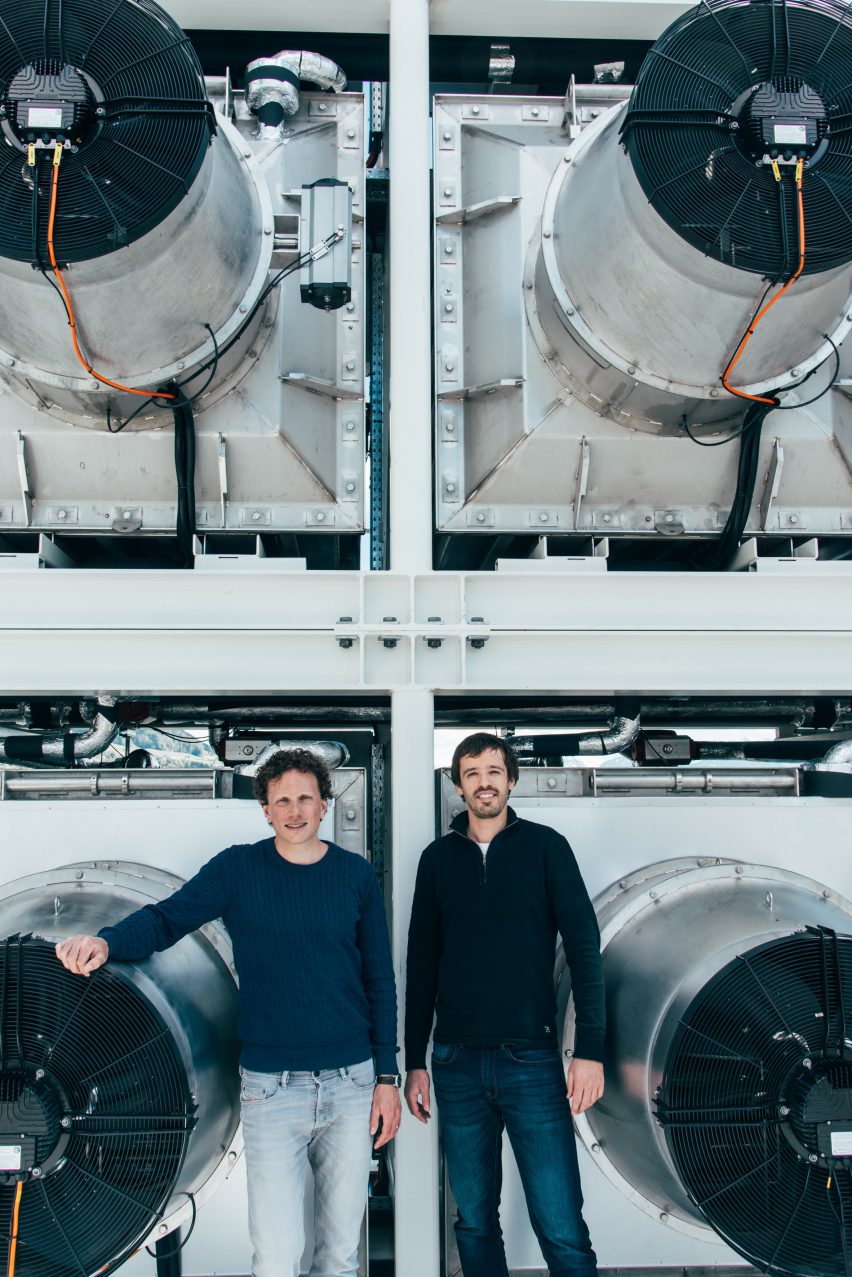
Climeworks says its plant is "a historic step for negative emissions technology – earmarked by the Paris climate agreement as being vital in the quest to limit a global temperature rise of two degrees Celsius".
The company was founded by engineers Christoph Gebald and Jan Wurzbacher, who first came up with the idea for the DAC plant in 2008 after visiting the greenhouses of agricultural enterprise Gebrüder Meier Primanatura AG in Hinwil, Switzerland. They were both students at the Swiss Federal Institute of Technology in Zurich (ETH) at the time.
The farm was ordering tanks of CO2 that were delivered by a truck that had to cover large distances. The duo had the idea to filter CO2 directly from ambient air and sell it on to Gebrüder Meier as a raw material delivered via gas pipeline.
"We presented our concept and concluded a memorandum regarding the possibility of purchase, in case we managed to build the corresponding plant," Gebald recalled. The first business plan was then developed for a venture challenge course at the university.
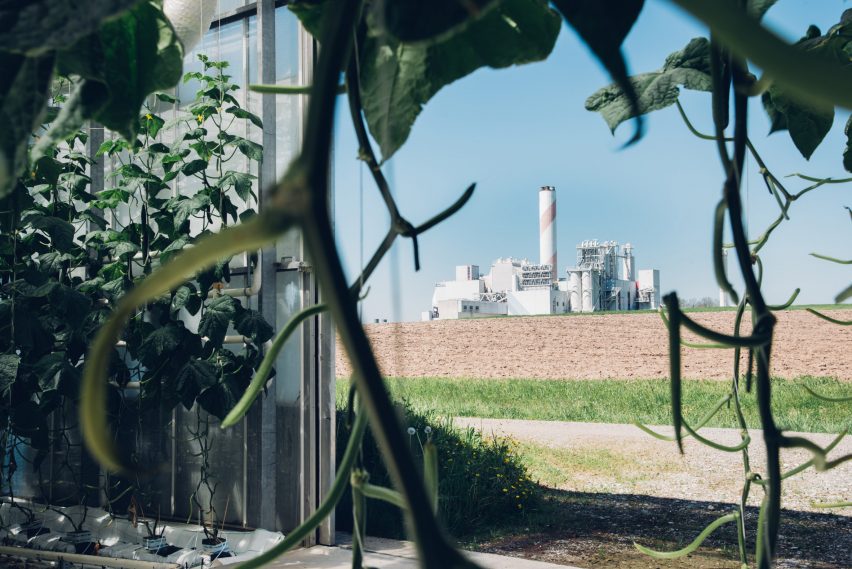
Now, nine years later, and the duo's first commercial CO2 extraction plant sits on top of a waste utilisation plant in view of Meier brothers' greenhouses 400 metres away.
"Since our first visit here we managed to upgrade the capacity from a few millilitres per day in the lab to an industrial scale of 900 tonnes per year," said Gebald.
Eighteen Climeworks CO2 collectors are installed on top of the roof of the waste utilisation plant, which is run by Swiss municipal waste disposal company KEZO. The collectors capture 2460 kilograms of CO2 per day (depending on factors such as weather conditions and air composition).
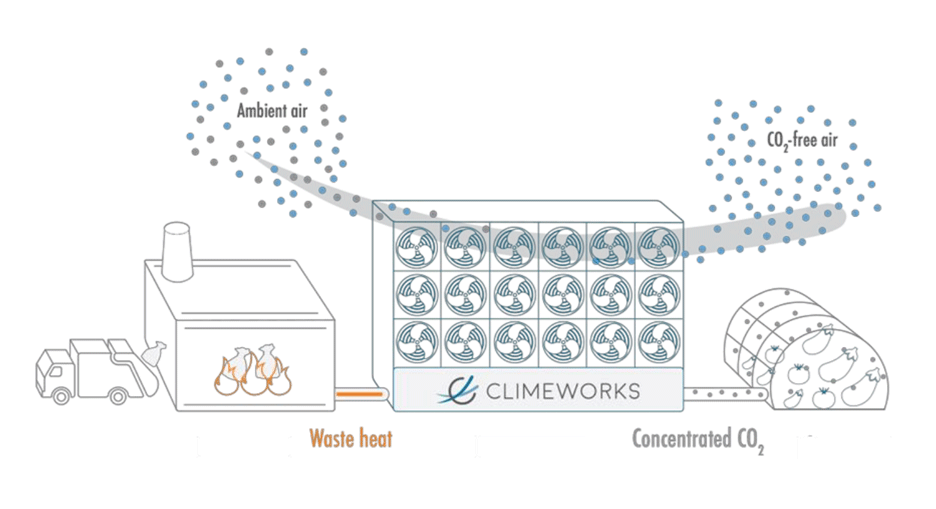
"The fans on the outside serve to suck in the ambient air," Gebald explained. Inside each collector unit, the air goes through a process of adsorption and desorption before being blown out again with reduced CO2 content.
"Our filters are saturated with CO2 within a few hours," Gebald continues.
To ensure the process of desorption, the saturated filter is heated up to about 100 degrees Celsius.
"For this we use the waste heat from KEZO, making our process particularly resource friendly," Gebald said. The pure CO2 gas is then isolated and transferred to Gebrüder Meier's greenhouses via gas pipeline.
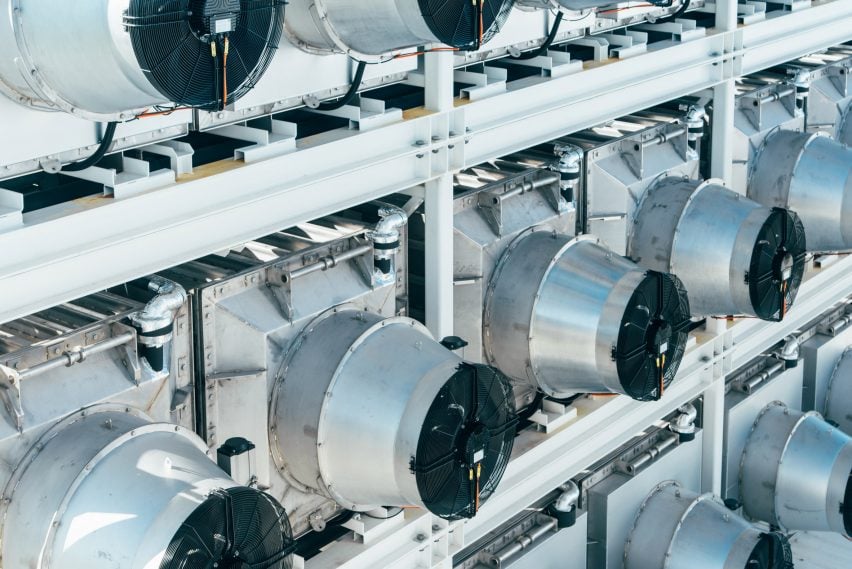
The agricultural enterprise buys up to 900 tonnes of the gas annually from Climeworks at market prices. "Using CO2 generated from local ambient air blends in well with our sustainable principles and supports the marketing of our products," said Gebrüder Meier.
Climeworks reports that the growth of Gebrüder Meier's cucumbers and tomatoes has "increased significantly".
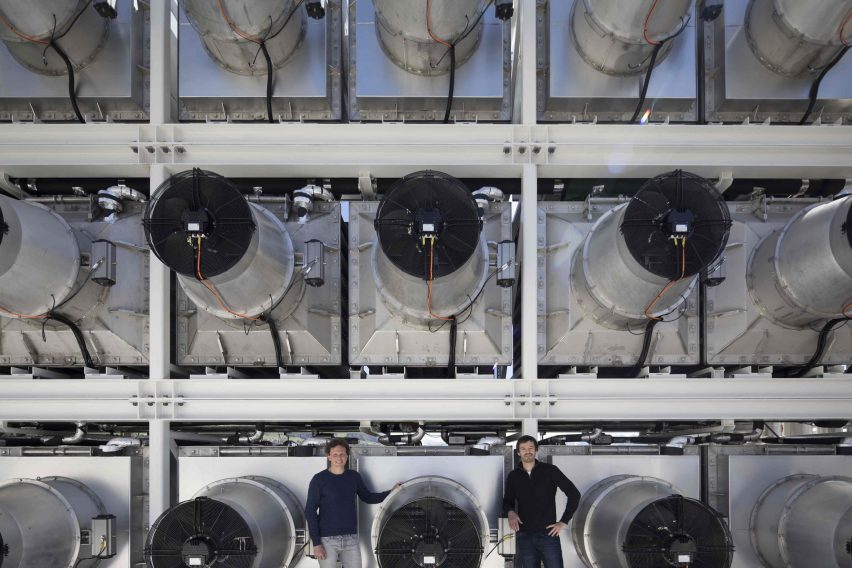
The Hinwil plant will operate as a three-year demonstration project in co-operation with the partners Gebrüder Meier and KEZO, and with a contribution towards non-amortisable costs by the Swiss Federal Office of Energy (SFOE).
To date, carbon capture and storage systems that reduce CO2 emissions to the atmosphere have usually been applied within power plants at sources where CO2 is concentrated. The CO2 is transported to a storage site, and deposited where it will not enter the atmosphere.
Extracting CO2 from the air was known to be possible, but considered not very practical because of the lower levels of CO2 concentration.
Other designers working on air purification technologies include Daan Roosegaarde, who in 2015 launched a Kickstarter campaign to fund a tower that could suck in polluted air and emit it back out into the immediate surroundings as clean air.
More recently, Roosegaarde has unveiled a concept for a bicycle that employs a similar technology but on a smaller scale.